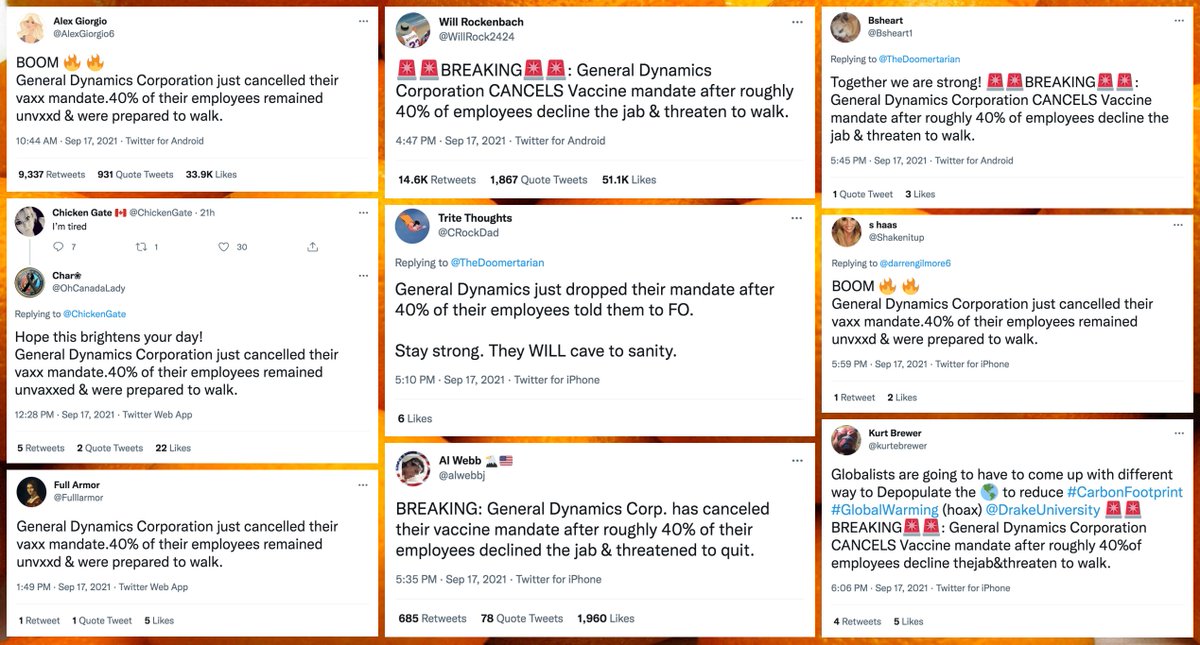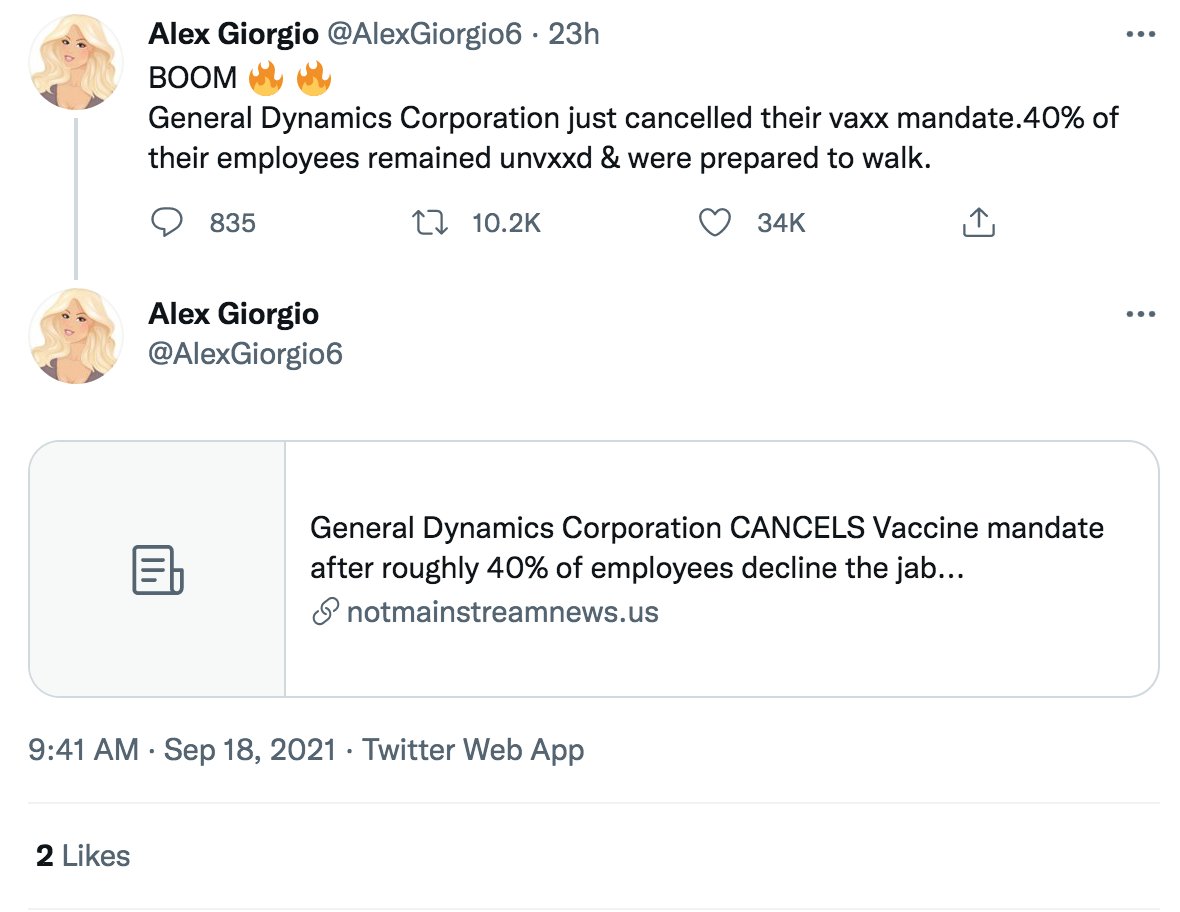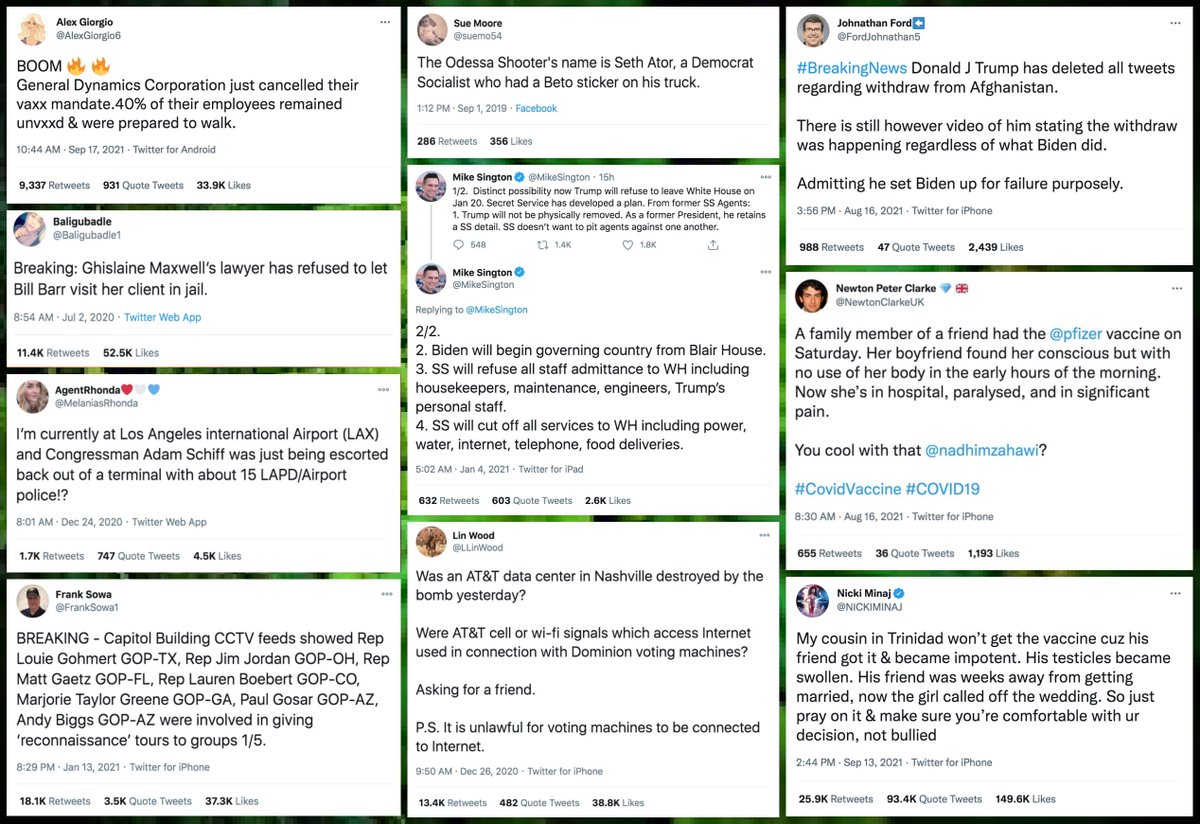Another day, another evidence-free viral rumor. The claim that General Dynamics canceled their vaccine mandate appears to have originated with @AlexGiorgio6, a Twitter account that has no apparent connection to General Dynamics or any journalistic entity.
cc: @ZellaQuixote
cc: @ZellaQuixote

The @AlexGiorgio6 account did eventually supply a "source" for their claim that General Dynamics was dropping its vaccine mandate, but that "source" is an obscure website quoting an unsourced tweet from another random Twitter account (@WillRock2424). 





At least four "news" sites have now amplified this bit of disinformation: beforeitsnews(dot)com, sgtreport(dot)com, investmentwatchblog(dot)com, and notmainstreamnews(dot)us. All four "articles" consist of tweets repeating the rumor accompanied by no actual information. 







Like many accounts that start unsourced viral rumors, @AlexGiorgio6 apparently isn't a fan of commentary on the rumor(s) in question. 

Still zero evidence whatsoever for this claim about @generaldynamics and therefore zero reason for any responsible person to retweet it, but that didn't stop a blue-check attorney with 262K followers from amplifying it and getting a crapton of retweets. 

https://twitter.com/pnjaban/status/1439084014665494538


If you want to slow the spread of disinformation, apply skepticism to dramatic claims presented without evidence even when the claims in question align with your political beliefs. There is no rational reason any of the narratives in this collage should've gotten traction. 

• • •
Missing some Tweet in this thread? You can try to
force a refresh































